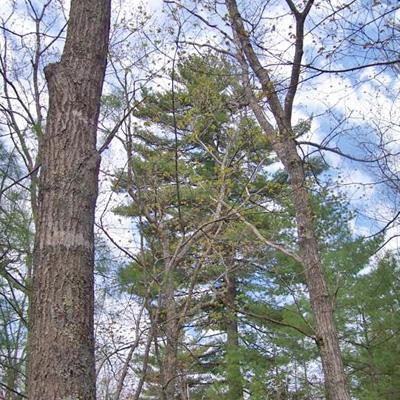Influence of Neighborhood Structure on Growth and Yield in Mixed Northern Red Oak - Eastern White Pine Stands

In New England, eastern white pine and northern red oak commonly grow together in mixed-species stands, accompanied by eastern hemlock, red maple, and other hardwoods. Great variability in spacing and juxtaposition of trees of different species, age, and size classes within small-scale "neighborhoods" of adjacent trees makes such stands difficult to model and manage but well-suited to study of neighborhood-scale competition.
NSRC researchers collected tree measurements and positions from a central point on 121 plots, representing a range of stand structure and species composition, at the USDA Forest Service Northern Research Station's Massabesic Experimental Forest, where a 1947 fire created stands in which post-fire origin trees surround patches of residual, pre-fire trees. Researchers statistically compared abilities of different variables, including surrounding species composition and measures of stand structure, to predict individual tree volume growth and whole plot biomass production.
Exact neighbor tree positions relative to subject trees did not appear to be relevant to individual growth rates. However, size of neighbor trees relative to subject trees was a critical variable in determining individual growth rates, and size metrics based on height or crown characteristics were superior to those based on diameter. Neighbor tree species composition also influenced individual tree growth rate, and the reaction to neighbor species varied with subject species. Computer models suggested vertical structure, after tree density, as the primary variable controlling biomass production rates. The contribution of pre-fire white pine to productivity was significant, and hemlock was found capable of increasing stand density and canopy layering when in the understory.
